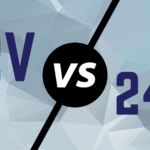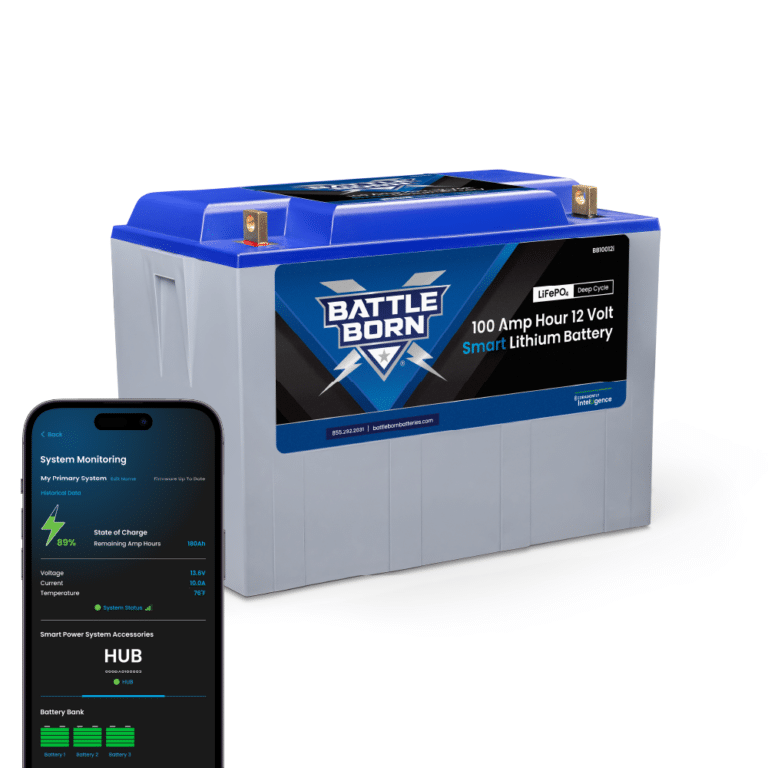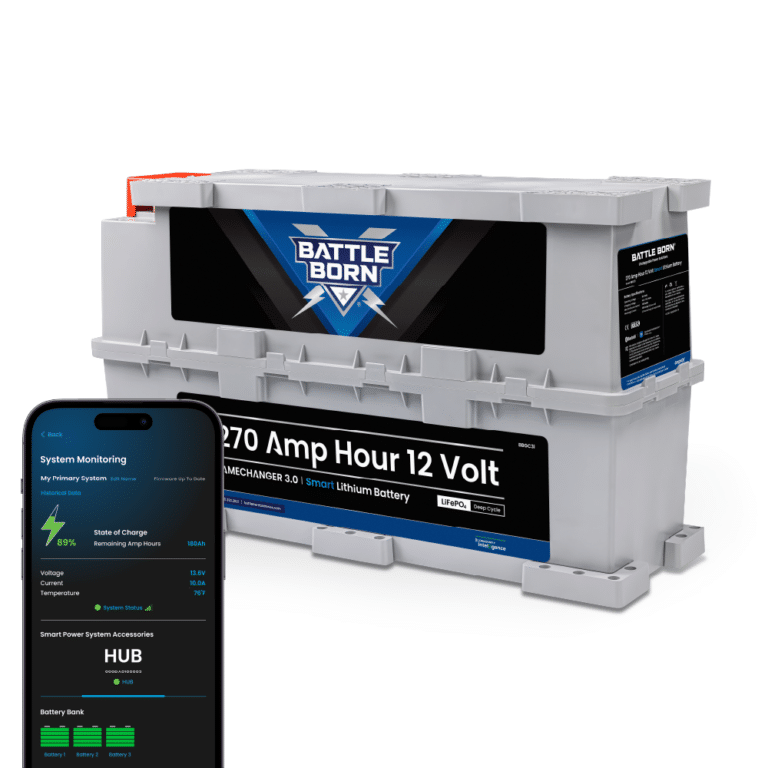
MENUMENU
TALK TO AN EXPERT
Special Hours: 7AM – 6PM PST
TALK TO AN EXPERT
Special Hours: 7AM – 6PM PST
Lithium-ion or Li-ion batteries power nearly every facet of our lives. They’re famous for their high energy density, which lets them run for extended periods before needing a recharge. That said, you also need to know about charging lithium-ion batteries safely.
Common charging mistakes can lead to damage and shortened lifespans, especially in the case of more powerful batteries like the ones we use in our RVs, homes, and sailboats. Here are the top five charging mistakes you can avoid to get the most out of your lithium-ion batteries.

Charging your lithium-ion batteries with anything other than a compatible charger can damage them beyond repair. The difference lies in the voltage required to deliver an effective charge.
Lead acid battery chargers rely on varying and sometimes high voltages. Meanwhile, lithium-ion batteries require constant voltage and current due to their unique design. Never use a lead acid charger on a lithium-ion battery. Beyond irreparable damage, using incompatible chargers can cause fires, explosions, personal injury, and property damage.
If you’re unsure, refer to the safety instructions provided by the battery manufacturer. They would have equipped you with a compatible charger for their product. Moreover, the manufacturer’s directions for use will be very clear—you may only use the original charger when charging lithium-ion batteries.
Unfortunately, the internet is full of misinformation about chargers. Just because somebody got away with it once doesn’t mean it’ll work the next time. Always contact the manufacturer to answer any charging-related questions. They’ll happily send you a new charger if you need to purchase one. Trying to DIY it is not worth your battery’s life—or yours.
Contrary to popular belief, it is possible to overcharge a battery. Our smartphones and laptops may be “smart” enough to prevent overcharging. The same isn’t always true for the lithium-ion batteries that power your RV, boat, or home.
When the lithium ions inside a battery overcharge, they can plate onto the anode, causing small deposits of lithium metal to form. This is dangerous because lithium metal is extremely reactive and can easily short-circuit the battery.
Overcharging can also lead to the electrolyte in your lithium-ion batteries breaking down and generating intense heat. This could result in what’s called a thermal runaway reaction.
Thankfully, most lithium-ion batteries have built-in safety features to prevent overcharging. Nonetheless, it’s still best to follow the manufacturer’s instructions in case those safety nets fail. You’ll know a battery is overcharged when it:

Letting a lithium-ion battery go for long periods without charging may cause permanent damage. This is because excessively deep discharges can affect the internal metal plates, rendering the battery useless and potentially hazardous.
To avoid overcharging and deep discharging, most lithium-ion batteries have built-in protective features to maintain specific voltages. For example, they’ll never discharge past 2.5 volts. Once the battery hits 2.5, it’ll stop sending power to the device. And while you might think the battery is “dead,” it’s actually clinging to what little life it has left.
In this scenario, a battery will, however, continue to draw power. So, if you let it sit in this low-voltage state, it will eventually drop to absolute zero, at which point the battery is truly dead.
Thankfully, the advanced lithium-ion battery systems in electric vehicles (EVs), heavy machinery, and electric boats incorporate a battery management system (BMS) to avoid overcharging and deep discharging. These systems measure the battery’s voltage and automatically switch off the load if it gets too low. Overheating protection circuits also prevent the battery from getting too hot while running or charging.
Lithium-ion batteries are notably heat averse. While being too cold can reduce the battery’s power capabilities, getting too hot can completely destroy it.
For instance, charging your lithium-ion batteries in hot temperatures could lead to the thermal runaway reaction mentioned earlier. This occurs when the heat generated inside the battery exceeds the battery’s heat dissipation capacity. The extreme heat then causes a chemical reaction inside the battery, resulting in fires or explosions.
Temperatures inside a lithium-ion battery can rise in milliseconds. Once a thermal runaway event begins, it’s often hard to stop. That’s why charging your lithium-ion batteries in the proper environment is crucial to safety and longevity.
Similar chemical reactions may occur if your lithium-ion battery gets wet. Thanks to the sealed cells and protective coating, they can withstand a little rain or an accidental splash. However, submerging lithium-ion batteries to the point that water penetrates the protective seal will lead to extensive damage.
Although swelling isn’t super common, it does sometimes happen to lithium-ion batteries. It means the battery has reached the end of its life cycle due to improper use, heat exposure, or natural degradation. By continuing to use these swollen batteries you may harm yourself and the device you’re powering.
In small devices, a swelling battery can break through a smartphone’s shell—sort of like the Chestbursters from Alien. In larger devices, the buildup of chemical compounds can can have more serious consequences. If punctured, it will release toxic gasses into the atmosphere. If exposed to fire or high heat, it could even explode.
Unfortunately, there is no way to fix a swollen battery. First, let it fully discharge. Then, safely remove the battery and dispose of it at an appropriate recycling facility. Catching a swollen battery before it causes any damage is key. It’s obviously better—and cheaper—to replace the battery than the entire device.

Avoiding these common mistakes when charging your lithium-ion batteries will make them last longer. It’ll keep you, your batteries, and your devices safe from hazards such as fire and toxic fumes. Never overcharge your batteries, always replace any swollen ones, and avoid using off-brand chargers.
Get in touch with Battle Born Batteries to learn more about safe battery ownership and operation.
Shop Best Sellers








Ask a technical specialist now at 855.292.2831
Stay in the Know
4 thoughts on “5 Easy Mistakes to Avoid When Charging Lithium-Ion Batteries”
I’ve got two 100 AH LifePO4 12 volt Battle-Born Batteries for my RV house battery set-up. I installed them without thinking about the charger/inverter that is now connected to them. What type charger/inverter do I need to keep them optimally charged?
Hi Kevin! To properly charge your Battle Born batteries, you will want to verify that the charging components in your system are capable of being programmed to the proper specifications outlined in your battery manual. Here is the link to the manual for the Battle Born 100Ah 12V batteries: https://battlebornbatteries.com/wp-content/uploads/2022/10/BB10012-Manual-Edition.PIM_BB10012Rev020_08282023.pdf
Why are you referring to lithium ion, but you’re showing pics of battle born lifepo4? I’m no expert, so correct me if I’m wrong but don’t Lithium ion and lifepo4 have different voltage requirements??
LiFePO4, or lithium iron phosphate, batteries are a specific type of lithium-ion battery along with other battery chemistries that include lithium.